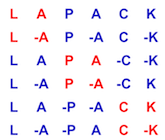111 SUBROUTINE dorgr2( M, N, K, A, LDA, TAU, WORK, INFO )
118 INTEGER INFO, K, LDA, M, N
121 DOUBLE PRECISION A( LDA, * ), TAU( * ), WORK( * )
127 DOUBLE PRECISION ONE, ZERO
128 parameter( one = 1.0d+0, zero = 0.0d+0 )
146 ELSE IF( n.LT.m )
THEN
148 ELSE IF( k.LT.0 .OR. k.GT.m )
THEN
150 ELSE IF( lda.LT.max( 1, m ) )
THEN
154 CALL xerbla(
'DORGR2', -info )
171 IF( j.GT.n-m .AND. j.LE.n-k )
172 $ a( m-n+j, j ) = one
182 CALL dlarf1l(
'Right', ii-1, n-m+ii, a( ii, 1 ), lda,
185 CALL dscal( n-m+ii-1, -tau( i ), a( ii, 1 ), lda )
186 a( ii, n-m+ii ) = one - tau( i )
190 DO 30 l = n - m + ii + 1, n
subroutine xerbla(srname, info)
subroutine dlarf1l(side, m, n, v, incv, tau, c, ldc, work)
DLARF1L applies an elementary reflector to a general rectangular
subroutine dlarf(side, m, n, v, incv, tau, c, ldc, work)
DLARF applies an elementary reflector to a general rectangular matrix.
subroutine dscal(n, da, dx, incx)
DSCAL
subroutine dorgr2(m, n, k, a, lda, tau, work, info)
DORGR2 generates all or part of the orthogonal matrix Q from an RQ factorization determined by sgerqf...

